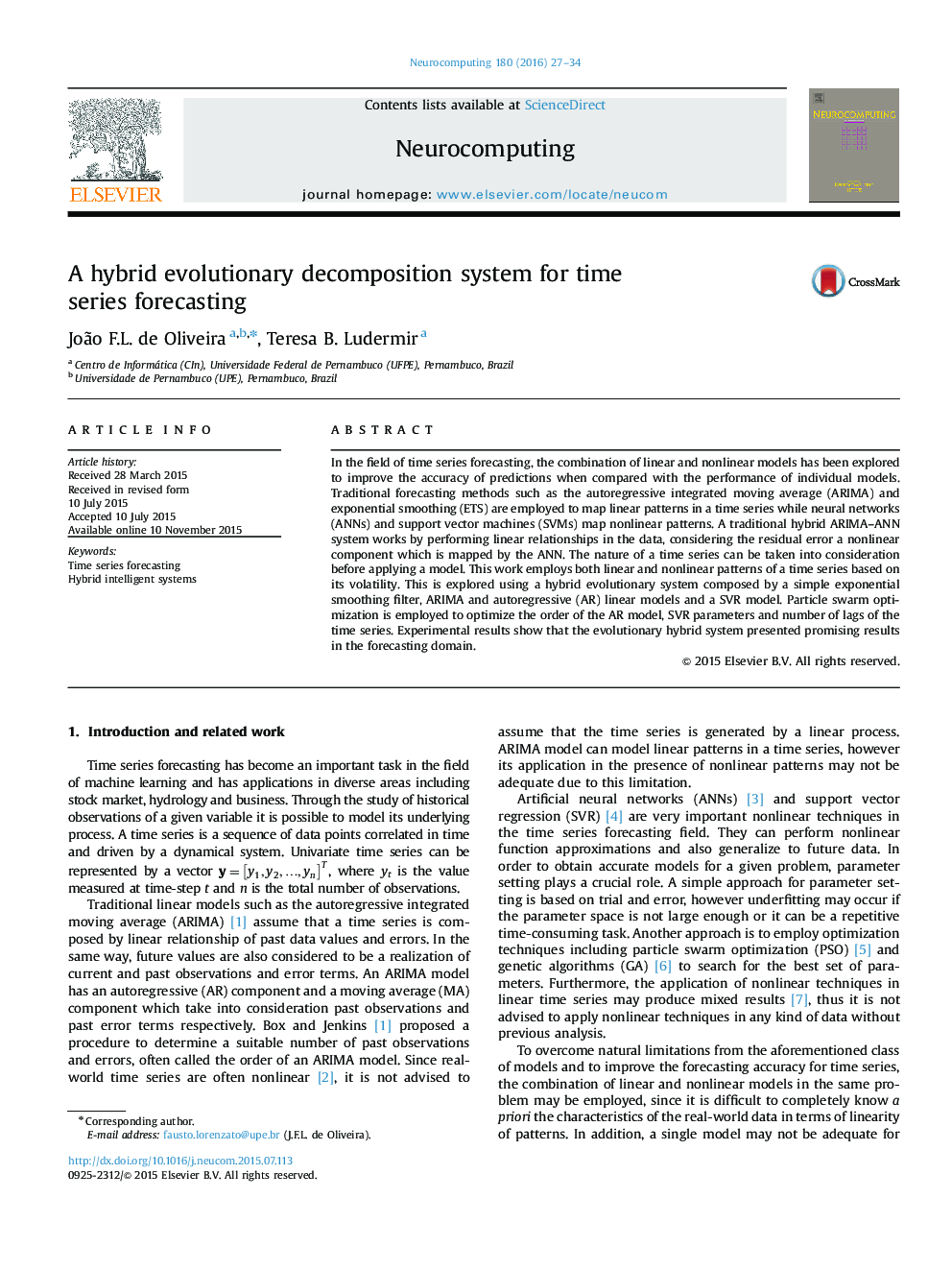| Article ID | Journal | Published Year | Pages | File Type |
|---|---|---|---|---|
| 408627 | Neurocomputing | 2016 | 8 Pages |
In the field of time series forecasting, the combination of linear and nonlinear models has been explored to improve the accuracy of predictions when compared with the performance of individual models. Traditional forecasting methods such as the autoregressive integrated moving average (ARIMA) and exponential smoothing (ETS) are employed to map linear patterns in a time series while neural networks (ANNs) and support vector machines (SVMs) map nonlinear patterns. A traditional hybrid ARIMA–ANN system works by performing linear relationships in the data, considering the residual error a nonlinear component which is mapped by the ANN. The nature of a time series can be taken into consideration before applying a model. This work employs both linear and nonlinear patterns of a time series based on its volatility. This is explored using a hybrid evolutionary system composed by a simple exponential smoothing filter, ARIMA and autoregressive (AR) linear models and a SVR model. Particle swarm optimization is employed to optimize the order of the AR model, SVR parameters and number of lags of the time series. Experimental results show that the evolutionary hybrid system presented promising results in the forecasting domain.
